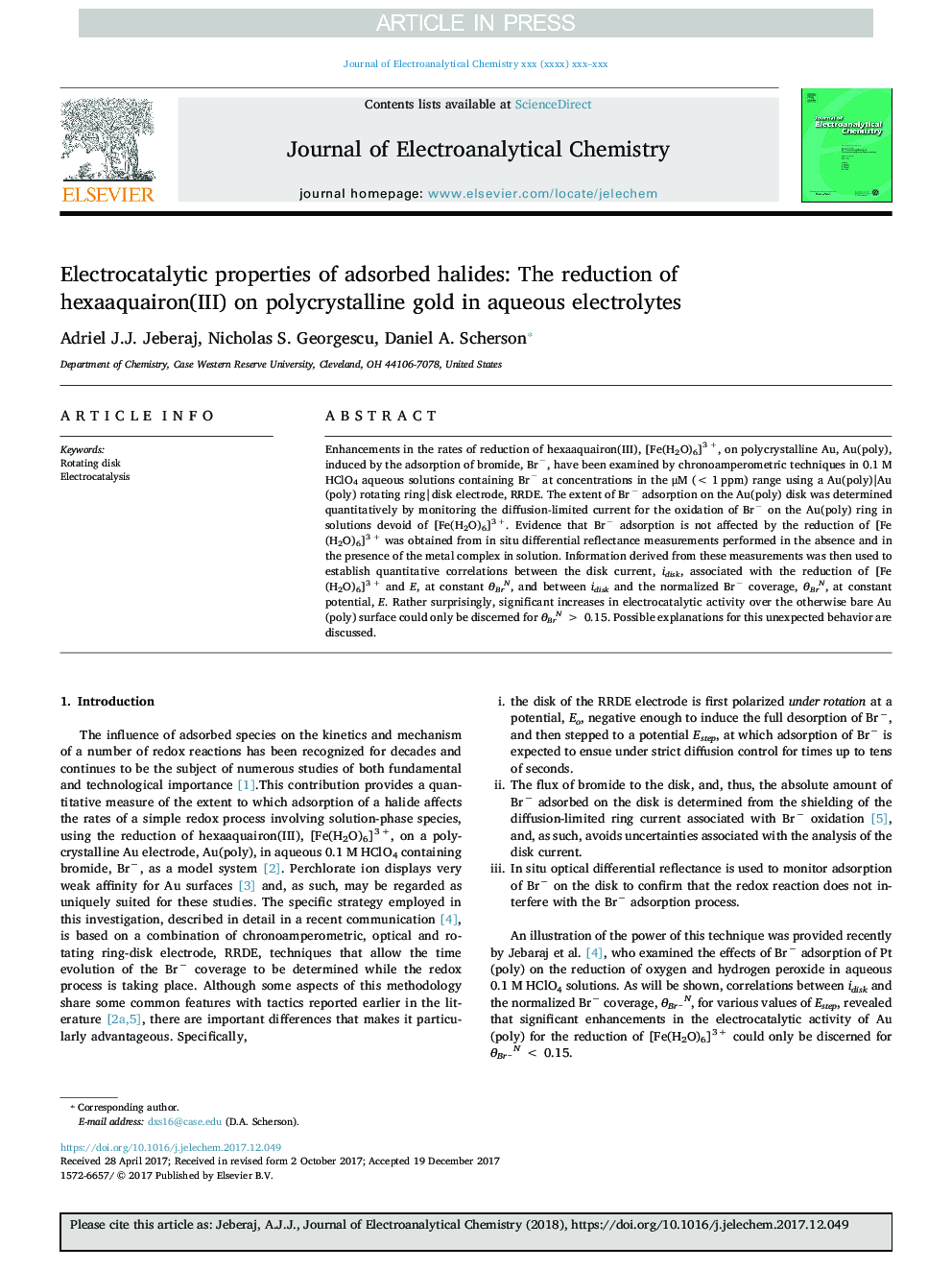| Article ID | Journal | Published Year | Pages | File Type |
|---|---|---|---|---|
| 6661834 | Journal of Electroanalytical Chemistry | 2018 | 7 Pages |
Abstract
Enhancements in the rates of reduction of hexaaquairon(III), [Fe(H2O)6]3 +, on polycrystalline Au, Au(poly), induced by the adsorption of bromide, Brâ, have been examined by chronoamperometric techniques in 0.1 M HClO4 aqueous solutions containing Brâ at concentrations in the μM (< 1 ppm) range using a Au(poly)|Au(poly) rotating ring | disk electrode, RRDE. The extent of Brâ adsorption on the Au(poly) disk was determined quantitatively by monitoring the diffusion-limited current for the oxidation of Brâ on the Au(poly) ring in solutions devoid of [Fe(H2O)6]3 +. Evidence that Brâ adsorption is not affected by the reduction of [Fe(H2O)6]3 + was obtained from in situ differential reflectance measurements performed in the absence and in the presence of the metal complex in solution. Information derived from these measurements was then used to establish quantitative correlations between the disk current, idisk, associated with the reduction of [Fe(H2O)6]3 + and E, at constant θBrN, and between idisk and the normalized Brâ coverage, θBrN, at constant potential, E. Rather surprisingly, significant increases in electrocatalytic activity over the otherwise bare Au(poly) surface could only be discerned for θBrN > 0.15. Possible explanations for this unexpected behavior are discussed.
Keywords
Related Topics
Physical Sciences and Engineering
Chemical Engineering
Chemical Engineering (General)
Authors
Adriel J.J. Jeberaj, Nicholas S. Georgescu, Daniel A. Scherson,
